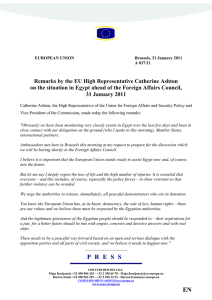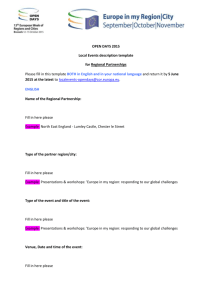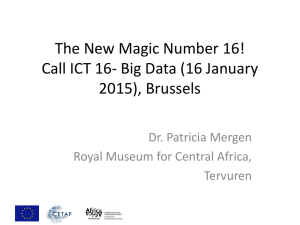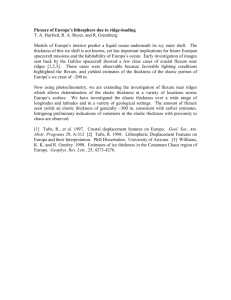Exploring Europa Robert T. Pappalardo Jet Propulsion Laboratory
advertisement
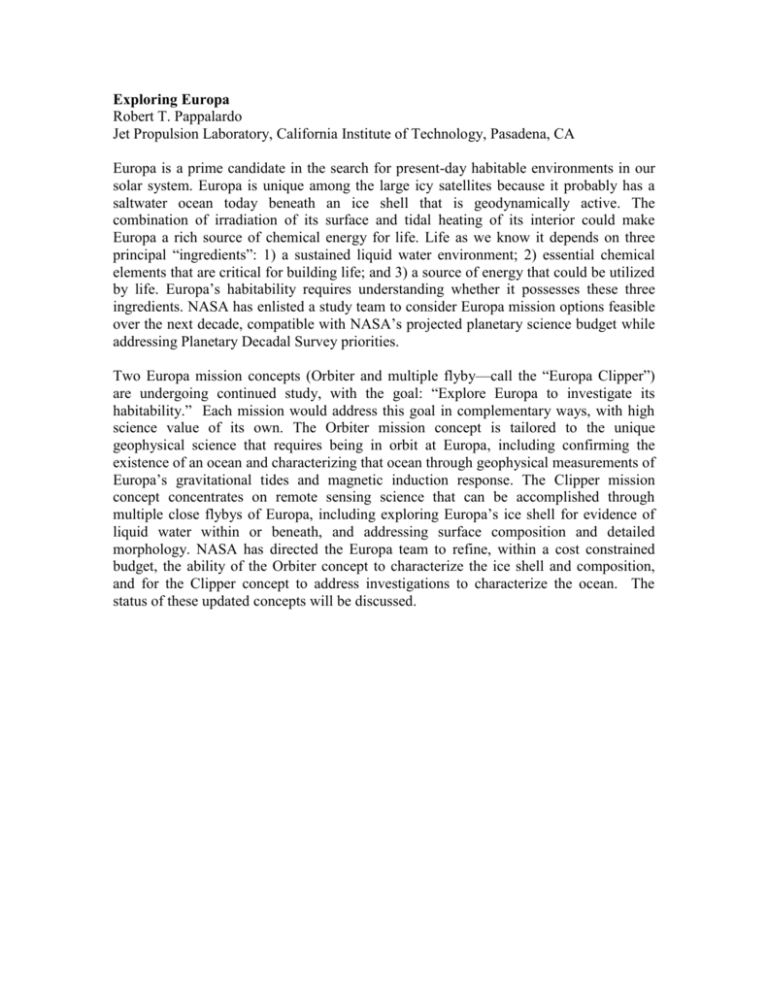
Exploring Europa Robert T. Pappalardo Jet Propulsion Laboratory, California Institute of Technology, Pasadena, CA Europa is a prime candidate in the search for present-day habitable environments in our solar system. Europa is unique among the large icy satellites because it probably has a saltwater ocean today beneath an ice shell that is geodynamically active. The combination of irradiation of its surface and tidal heating of its interior could make Europa a rich source of chemical energy for life. Life as we know it depends on three principal “ingredients”: 1) a sustained liquid water environment; 2) essential chemical elements that are critical for building life; and 3) a source of energy that could be utilized by life. Europa’s habitability requires understanding whether it possesses these three ingredients. NASA has enlisted a study team to consider Europa mission options feasible over the next decade, compatible with NASA’s projected planetary science budget while addressing Planetary Decadal Survey priorities. Two Europa mission concepts (Orbiter and multiple flyby—call the “Europa Clipper”) are undergoing continued study, with the goal: “Explore Europa to investigate its habitability.” Each mission would address this goal in complementary ways, with high science value of its own. The Orbiter mission concept is tailored to the unique geophysical science that requires being in orbit at Europa, including confirming the existence of an ocean and characterizing that ocean through geophysical measurements of Europa’s gravitational tides and magnetic induction response. The Clipper mission concept concentrates on remote sensing science that can be accomplished through multiple close flybys of Europa, including exploring Europa’s ice shell for evidence of liquid water within or beneath, and addressing surface composition and detailed morphology. NASA has directed the Europa team to refine, within a cost constrained budget, the ability of the Orbiter concept to characterize the ice shell and composition, and for the Clipper concept to address investigations to characterize the ocean. The status of these updated concepts will be discussed.

